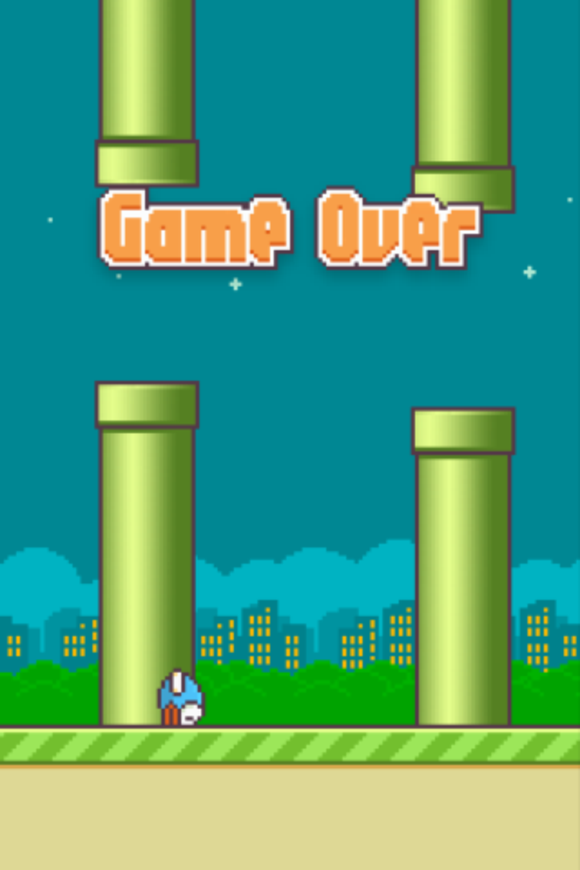Flappy bird is the word
In case you missed the news last week, the Flappy Bird mobile game was pulled off the app stores by its creator. The game had already garnered a lot of publicity before being pulled off for a myriad of reasons – its addictiveness, difficulty, and graphic resemblance to 8-bit Super Mario Bros. Pulling the game from the app stores brought the publicity into overdrive and even auction site listings for devices loaded with the game.
There’s been a lot of commentary about the entire phenomenon and fall out. To me Flappy Bird was a delightful surprise.
There’s a lot of great examples of freemium mobile games done right, but for awhile now some freemium mobile games have felt a little too well engineered. These games like Candy Crush Saga masterfully pull you in for the first x number of minutes. They give you just enough of a challenge to want to keep going and become addicted. Then with the same masterful design, the games tune that challenge into frustration. These games contain paid options that provide in-game assistance. As that challenge is tuned into frustration, those paid options start to seem awfully tempting.
It’s great, don’t get me wrong – all the power in the world to these companies and the users that enjoy these products. And I should emphasize that there are good and bad ways of doing freemium.
One of the better ways is to allow gamers to advance more quickly by paying, but not more easily. So present paying and non-paying gamers with the exact same challenges, but allow paying gamers to access those challenges quicker (and progress through the game faster). Freemium models also work better when they are built around communities where the game makers have a relationship with the players.
 But what you don’t want to do is leave players with a bad taste in their mouths, like they’ve been skillfully and deliberately manipulated into having to pay to continue to finish the game.
But what you don’t want to do is leave players with a bad taste in their mouths, like they’ve been skillfully and deliberately manipulated into having to pay to continue to finish the game.
I feel like something is lost in the process when freemium is done wrong. The game design can suffer if in-game monetization becomes too much of a factor. Games are a product, but they are an art form too. Great games are supposed to be just hard enough to make you want to keep playing, not hard enough to make you want to keep paying.
And this is where Flappy Bird is a delightful surprise. It feels like a throwback to another era.
There’s no delicately “warming you up” with easy levels. Odds are first time you play the game it will be pretty hard to get the bird through the first pipe. There’s no “optional layers of difficulty per level”, like the three star system of Angry Birds. Either the bird keeps flying, or thump, you’re done! The closest thing to levels at all is the layered rewards of bronze, silver, gold, and platinum medals for flying through 10,20,30 and 40 pipes. After that it’s up to you to aim for a good old-fashioned high score (remember those??). And because if you stop paying attention for even the slightest instant you’ll miss a tap and your bird will hit the floor, the game is wonderfully effective at inducing a “glued to the game” flow experience that’s absent from a lot of mobile games.
Flappy Bird is crude and difficult. It’s something a lot of developers could whip up in a weekend. And I’m pretty sure if you showed it to video game publishers a year ago they would have laughed at the concept. Its success reaffirms that video games should be considered a new type of art, not a science or a math equation that can be bottled up and repeated. And just like other arts that are social by definition (creators and audience/observers/participants), tastes and trends can change and come and go overtime. I won’t hold my breath, but I hope Flappy Bird’s mainstream attention and success signals a shift towards more simple and fun indie games.
